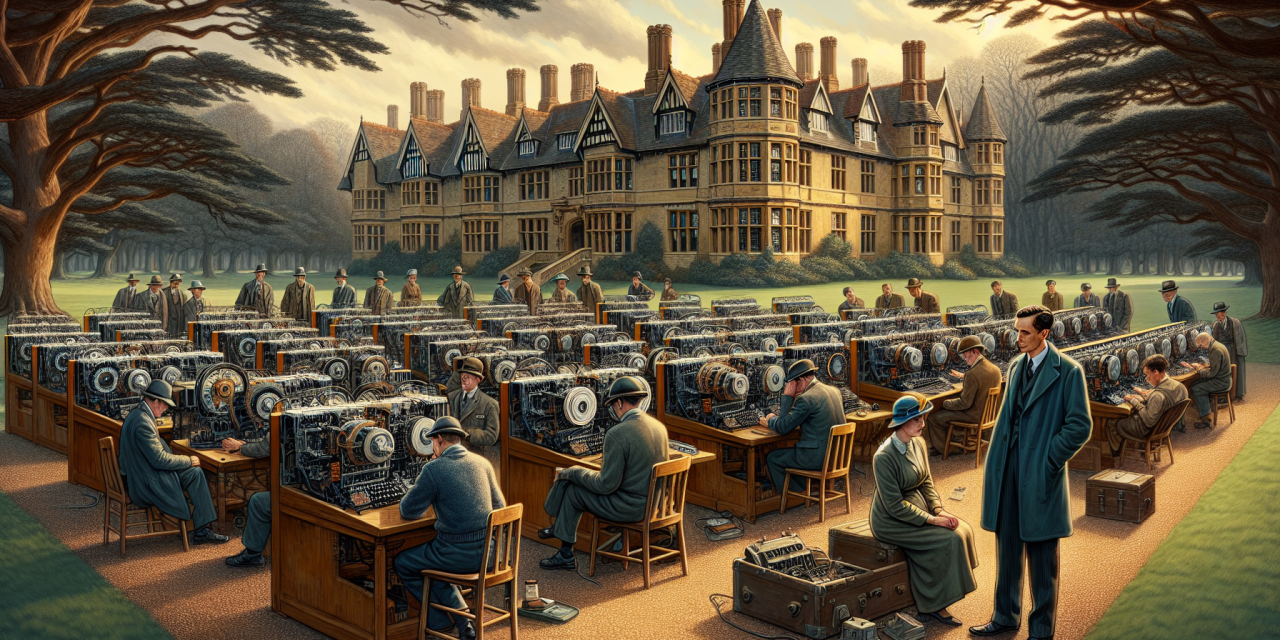Picture this: a sprawling Victorian mansion in the English countryside, surrounded by manicured lawns and ancient oak trees. It’s 1940, and Britain stands alone against Nazi Germany. But inside this seemingly peaceful estate called Bletchley Park, the most brilliant minds of a generation are fighting a different kind of war—one waged with mathematics, logic, and pure human ingenuity.
At the heart of this intellectual battlefield stands Alan Turing, a 28-year-old mathematician whose ideas about machines and computation would reshape our entire world. But he wasn’t working alone. Thousands of codebreakers—mathematicians, linguists, historians, even crossword puzzle enthusiasts—joined forces to crack what seemed impossible: the German Enigma code.
Their story isn’t just about wartime heroics. It’s about how logical thinking, creative problem-solving, and collaborative teamwork laid the foundation for every computer, smartphone, and digital device you use today. And yes, it’s also a story about the complex ethical questions that arise when brilliant minds create powerful technologies.
The Enigma: A Puzzle Wrapped in an Electronic Enigma
Imagine you’re trying to send a secret message to your friend across town, but you know that people might intercept it along the way. You’d want to scramble it somehow, right? The Germans thought they had the perfect solution: the Enigma machine.
Picture an old-fashioned typewriter crossed with the most complicated combination lock you’ve ever seen. When a German operator pressed the letter ‘A’ on the Enigma keyboard, the machine might output the letter ‘Q’. Press ‘A’ again, and this time it might give you ‘M’. The machine had rotors—think of them like the number wheels on a combination lock—that spun with each letter, constantly changing the code.
Here’s the mind-bending part: the Enigma had billions upon billions of possible settings. The Germans changed these settings daily, sometimes multiple times per day. It was like having a combination lock where the combination changed every few hours, and you had to figure out not just today’s combination, but also decode all the secret messages sent with yesterday’s combination and the day before that.
The German military was so confident in Enigma’s security that they used it for everything—troop movements, supply chains, battle plans. Breaking this code could literally change the course of history.
Alan Turing: The Man Who Thought Like a Machine
Alan Turing didn’t look like what you might expect from a war hero. He was tall, lanky, often unkempt, with a habit of chaining his coffee mug to the radiator to prevent theft. He stuttered when he spoke and got so absorbed in his work that he’d forget to eat.
But Turing possessed something extraordinary: the ability to think about thinking itself. While other mathematicians focused on solving specific problems, Turing asked bigger questions: “What does it mean to compute something? Could a machine think? How would we know?”
Before arriving at Bletchley Park, Turing had already imagined something revolutionary—a theoretical machine that could solve any problem that could be solved through step-by-step logical processes. We now call this concept a “Turing machine,” and it’s the foundation of every computer ever built.
When faced with Enigma, Turing didn’t just try to crack individual messages. Instead, he thought like a computer scientist avant la lettre: “How can we build a machine to solve this problem faster and more systematically than human minds alone?”
The Bombe: Where Hardware Meets Logical Thinking
Turing’s breakthrough came from recognizing patterns in human behavior. German operators, despite their training, made predictable mistakes. They’d sometimes use obvious passwords, repeat common phrases, or follow standard military protocols. These habits created tiny cracks in Enigma’s seemingly impenetrable armor.
Working with engineer Harold Keen and others, Turing designed a mechanical computer called the Bombe. Picture a room-sized contraption filled with rotating drums, electrical circuits, and thousands of colored wires. It looked like something between a pipe organ and a telephone switchboard had a very complicated baby.
The Bombe didn’t solve Enigma through brute force—trying every possible combination would take longer than the age of the universe. Instead, it used logical shortcuts. If you knew that a particular encrypted message probably contained the word “weather” (German meteorological reports were sent at predictable times), the Bombe could test thousands of possible Enigma settings, looking for configurations that would transform the encrypted jumble into that expected word.
It was like having a super-powered detective that could simultaneously test thousands of theories about how a crime was committed, ruling out the impossible scenarios until only the truth remained.
The Power of Diverse Teams
Here’s something that might surprise you: some of Bletchley Park’s most effective codebreakers weren’t mathematicians at all. The British government secretly recruited people through newspaper crossword contests, chess tournaments, and academic networks. They assembled historians who understood German military culture, linguists who could spot patterns in language, and puzzle enthusiasts who approached problems from completely unexpected angles.
Ann Mitchell, a young woman fresh out of university, became one of the most skilled Bombe operators. Mavis Batey cracked Italian naval codes by recognizing that encrypted admirals’ names followed predictable patterns. These weren’t just “support staff”—they were innovative thinkers whose diverse perspectives proved crucial to success.
The interdisciplinary approach at Bletchley Park mirrors how modern tech teams work best. You need the mathematical rigor of computer scientists, the creativity of designers, the practical wisdom of engineers, and the human insight of people who understand how technology affects real lives. Different minds see different solutions.
When Brilliant Minds Face Ethical Dilemmas
Breaking Enigma created an agonizing moral puzzle. If the Allies could read German plans, they could save lives by avoiding ambushes or preventing attacks. But if they acted on the intelligence too obviously, the Germans would realize their code was broken and would switch to something even more secure.
Sometimes, British leaders had to let attacks happen to preserve the greater secret. They had to balance immediate lives against long-term strategic advantage—decisions that haunted everyone involved.
This ethical complexity echoes through modern technology. When tech companies develop artificial intelligence, facial recognition, or data analysis tools, they face similar questions: Just because we can build something, should we? Who benefits? Who might be harmed? How do we balance innovation with responsibility?
Turing himself later faced tragic personal consequences when his homosexuality—illegal in 1950s Britain—was discovered. The same government that had relied on his genius to help win the war persecuted him for who he was. His story reminds us that technological progress doesn’t automatically lead to social progress.
The Invisible Revolution
The work at Bletchley Park remained classified for decades after the war ended. Most participants never spoke about their contributions, taking one of history’s most important secrets to their graves. The world didn’t fully understand how crucial codebreaking had been to Allied victory—some historians estimate it shortened the war by two to four years.
But the intellectual legacy ran deeper than military strategy. Turing and his colleagues had proven that machines could be designed to think logically, to process information, and to solve problems that seemed to require human intelligence. They had created the conceptual blueprint for electronic computers.
After the war, many Bletchley Park veterans went on to build Britain’s first electronic computers, establish computer science departments at universities, and found the tech companies that would define the digital age. The logical thinking patterns they developed while cracking codes became the foundation for programming languages, algorithms, and artificial intelligence.
Lessons for Modern Coders
What can today’s programmers and problem-solvers learn from Turing and the Bletchley Park team?
First, the most powerful solutions often come from understanding patterns in human behavior, not just technical systems. Modern cybersecurity still relies heavily on recognizing that people’s habits—weak passwords, predictable responses, social engineering vulnerabilities—create openings that pure computational power cannot.
Second, diverse teams really do solve problems better. The most innovative tech companies deliberately bring together people with different backgrounds, experiences, and ways of thinking. Just as Bletchley Park needed both mathematicians and crossword enthusiasts, modern projects benefit from coders who can also think like artists, philosophers, historians, or teachers.
Finally,








